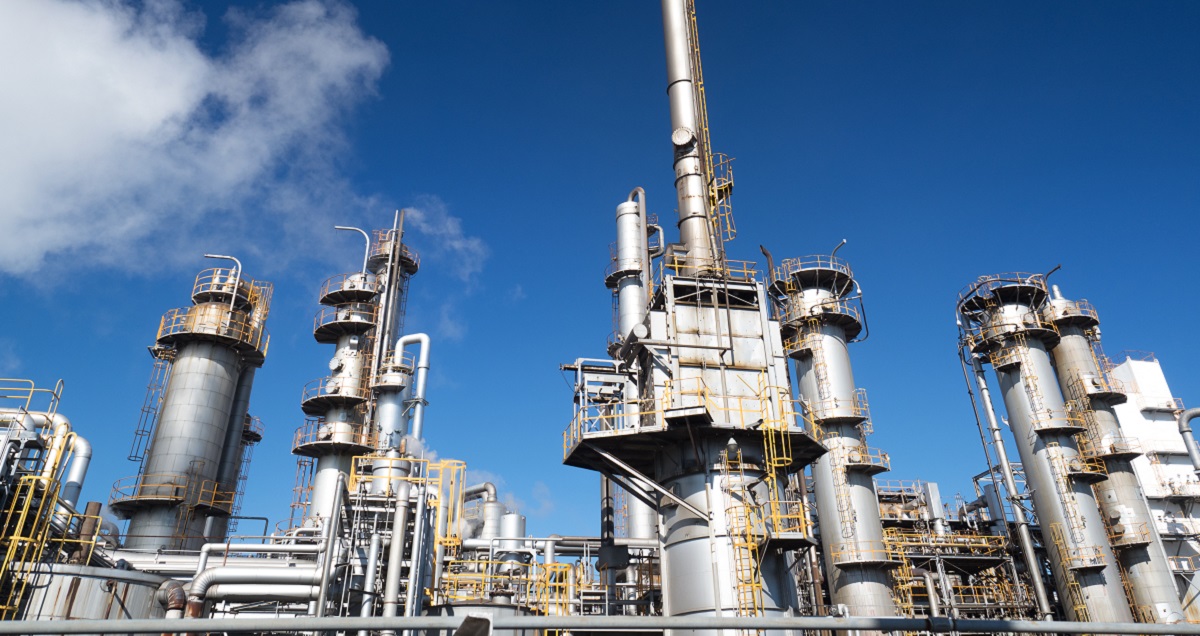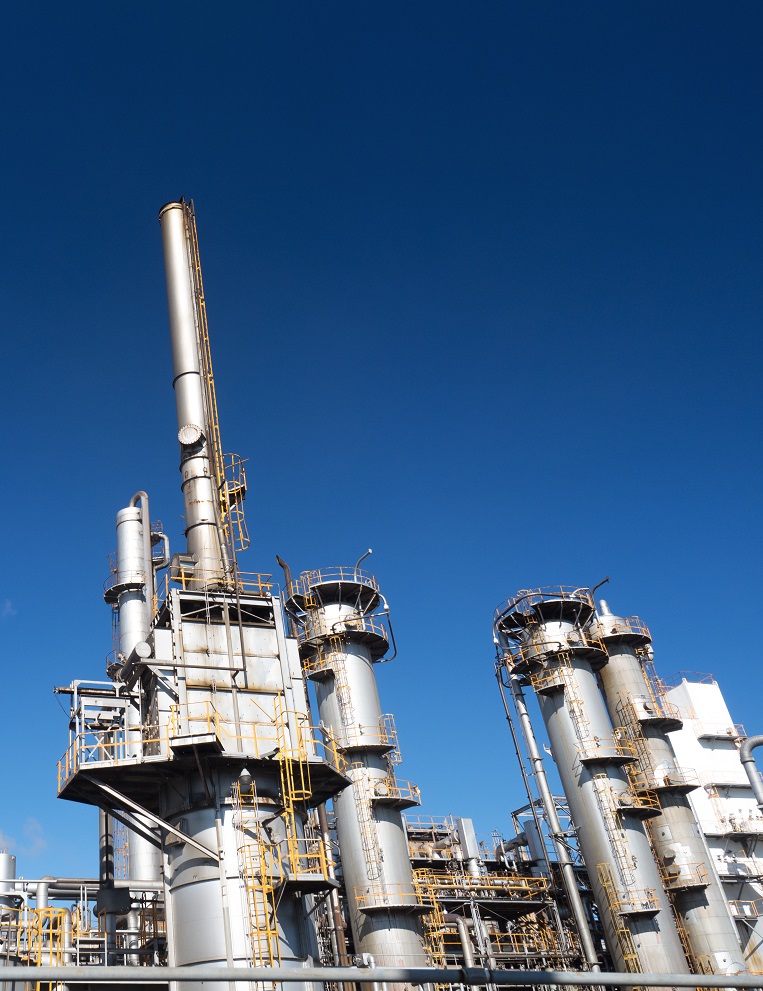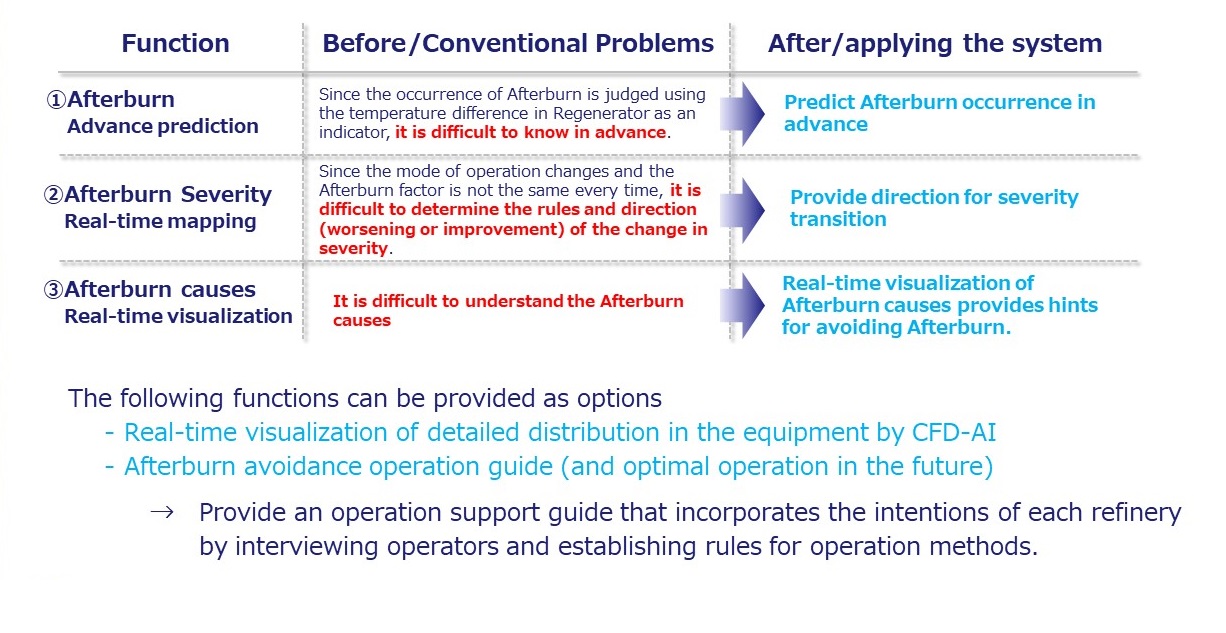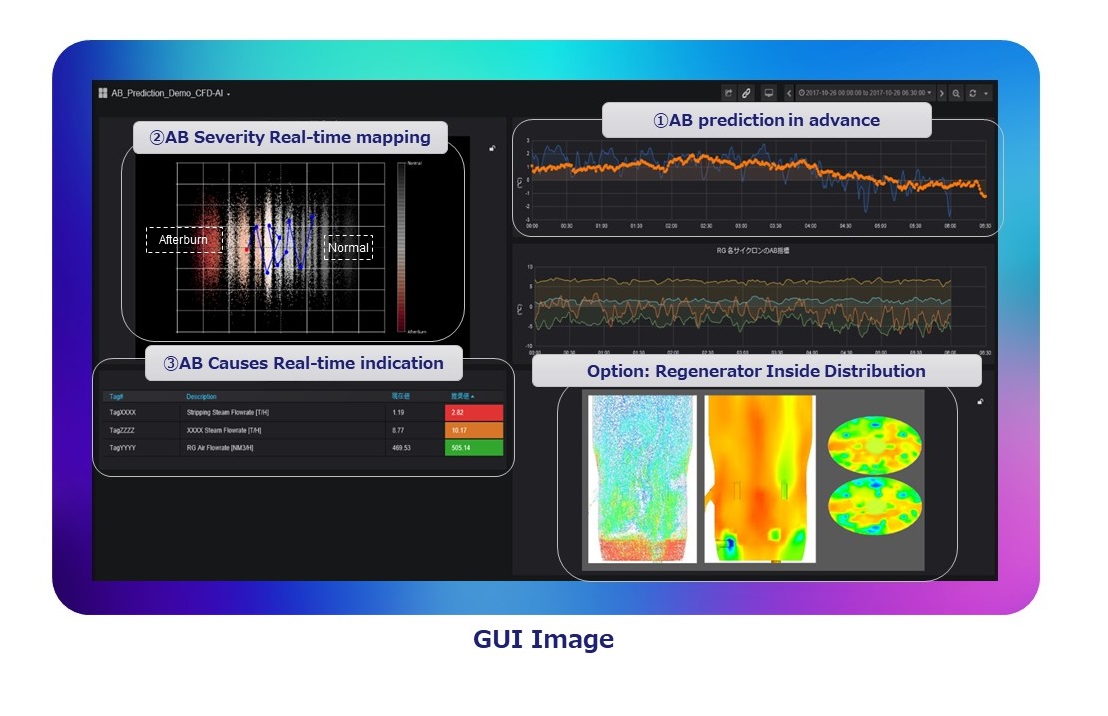There are two types of FCC AI Optimizers: FCC Convertor-status Prediction AI System and FCC Afterburn Prediction AI System, and either one or both systems can be introduced depending on your needs.
FCC Convertor-status Prediction AI System
These are the following operational challenges associated with complex reactions in the FCC Unit:
- Currently, it takes several weeks to grasp the catalyst properties including activity, and it is not possible to grasp them in real-time.
- In addition, the method for setting optimal operating conditions according to the crude oil type has not been established.
In response to these issues, Chiyoda's FCC reaction optimization AI learns the past operating conditions and presents the reaction conditions and optimal operating parameters of the FCC Unit in a timely manner.
We are also developing AI for optimizing the Cat/Oil ratio and Oil/Steam ratio, optimizing the FCC Unit operation according to crude oil type, and improving product yield.
In the future, we aim to further optimize operations by linking with RTO/APC (operation optimization/advanced control).
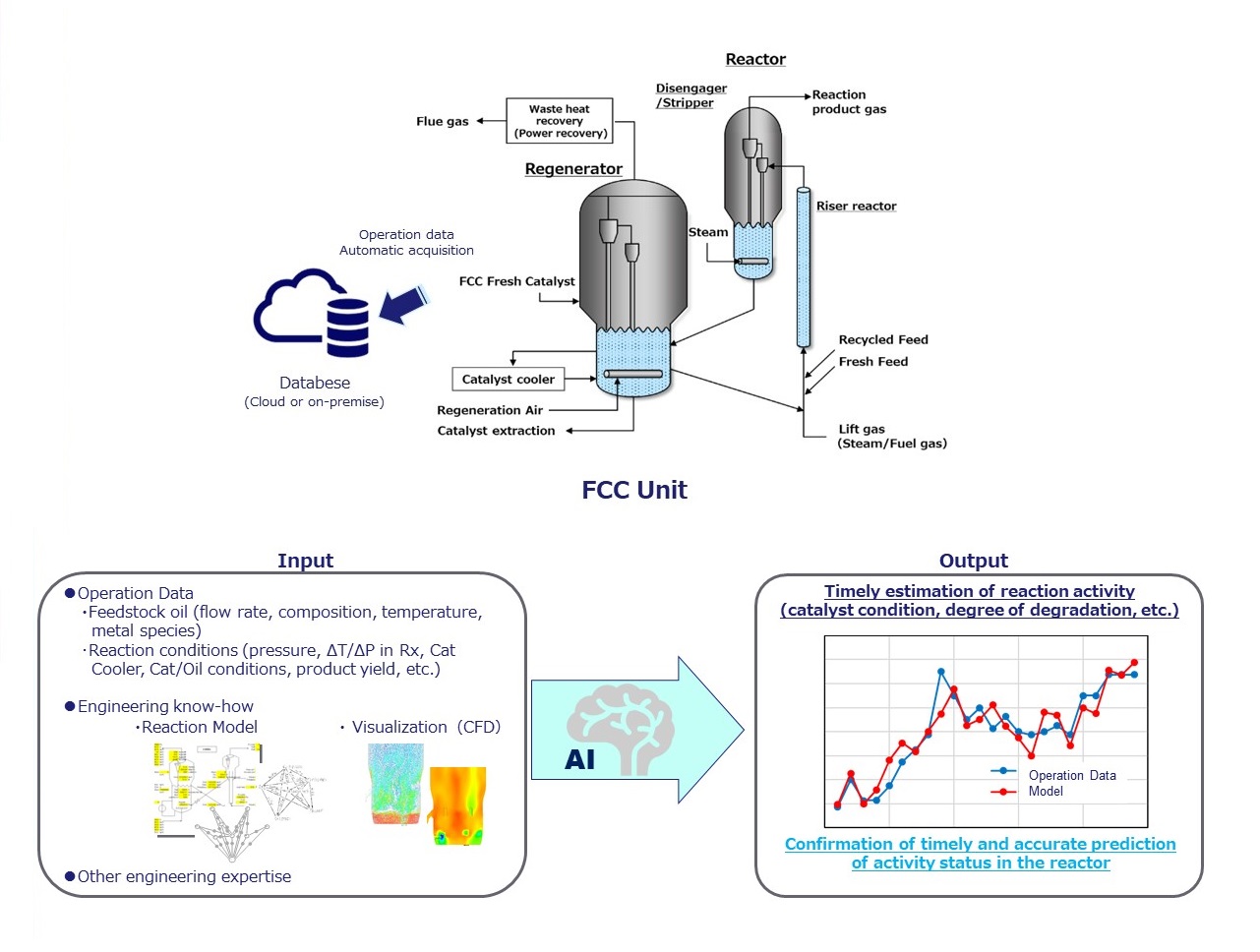
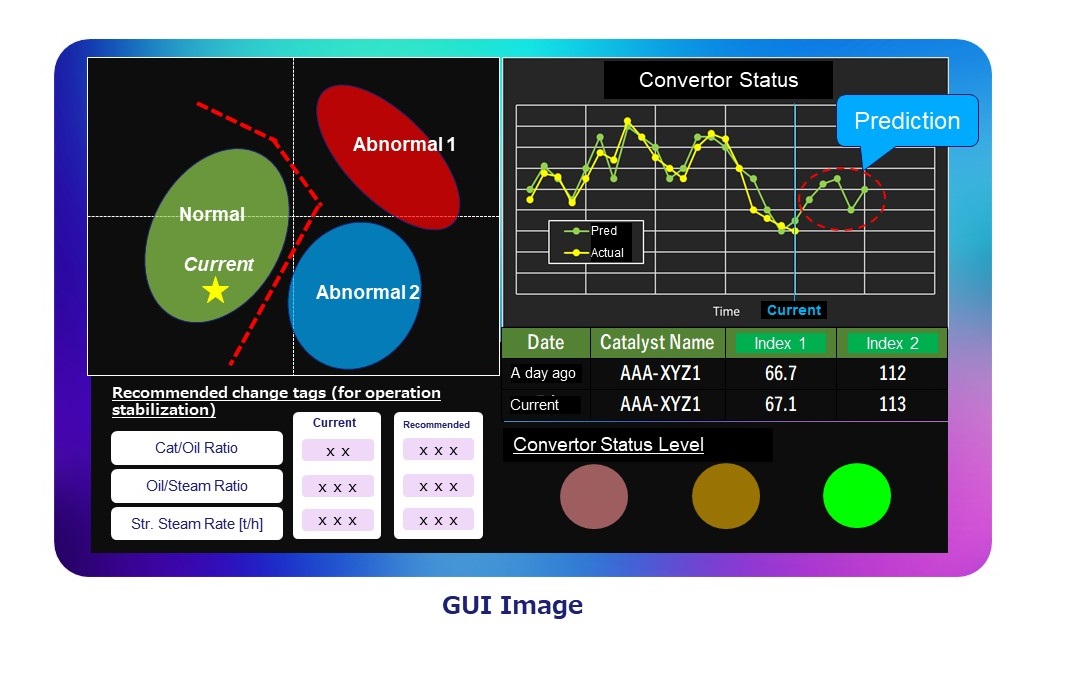
Benefits of Introduction
- Real-time presentation of reaction activity
- Reduces the amplitude of reaction activity
- Reduces the chance of a decrease in reaction activity
- Accurate operation at the reaction activity according to the production plan

